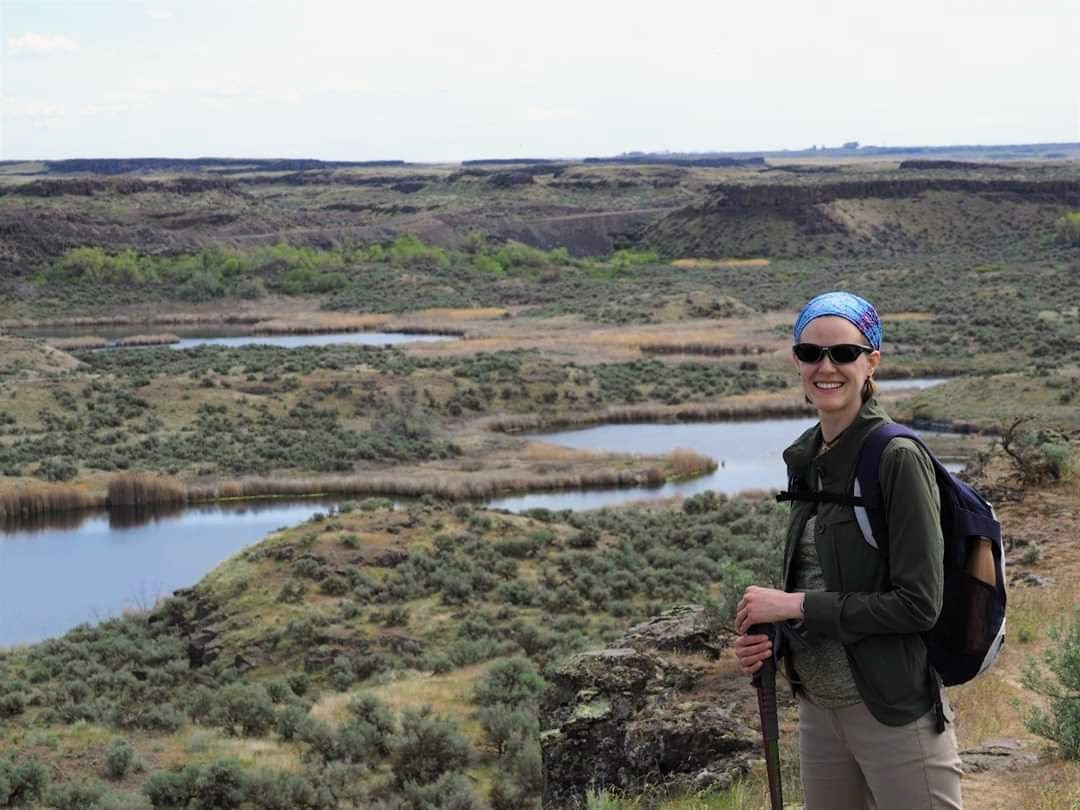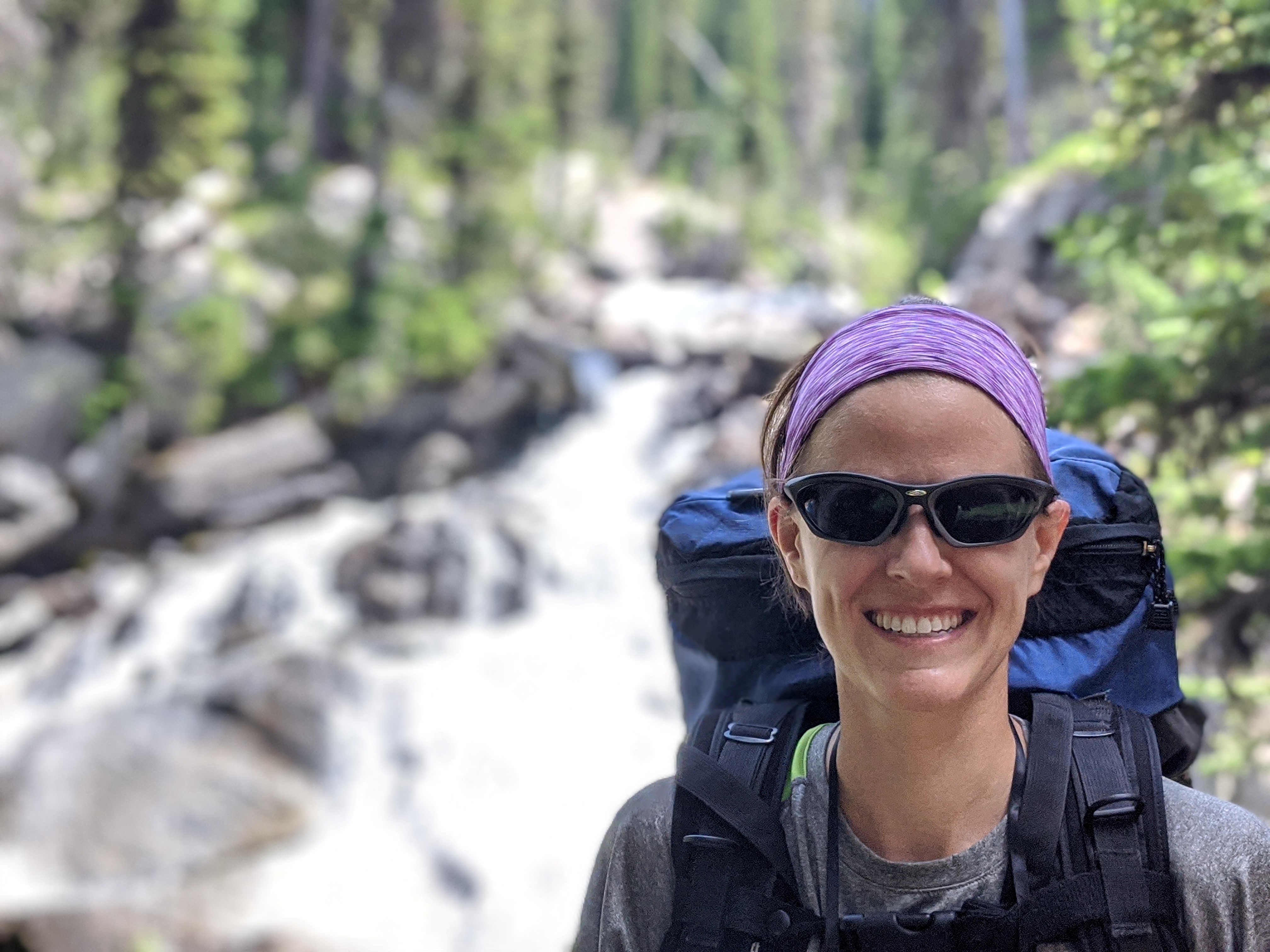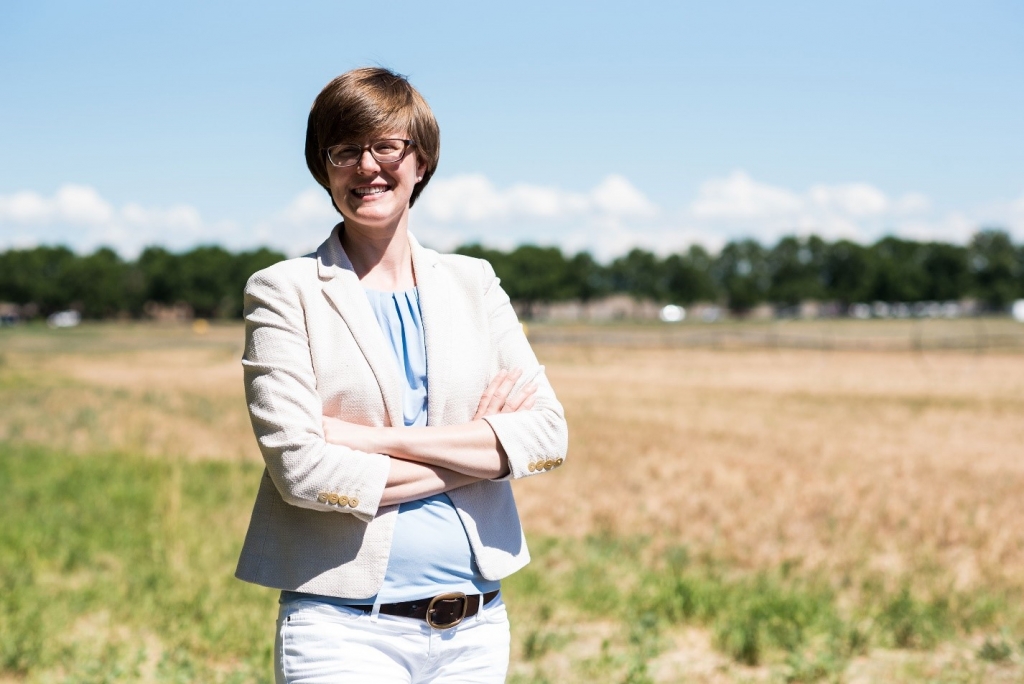UEC Profile: Susannah Burrows Pays It Forward
Published: 17 May 2021
An early career researcher is interested in ice-nucleating particles, biogeochemistry modeling, and giving back
Editor’s note: This is the third article in a new series of profiles on members of the ARM User Executive Committee (UEC).

Can a tiny action create big outcomes years later? It’s called a “butterfly effect,” and according to Susannah Burrows, hers was a spark of curiosity lit by a second-grade teacher in State College, Pennsylvania.
“Mrs. Burns had us keep weather journals. We went outside every day, looked at the sky, and wrote down what kind of clouds we saw,” recalls Burrows with a broad smile. “We recorded the temperature, and someone would read the barometer. It was one of the things that really got me interested in atmospheric science early on.”
That elementary school exercise set an academic path that led to Burrows’ career as an atmospheric scientist.
Fast forward a few decades and more than a few flutters of a butterfly’s wing, and Burrows today is at Pacific Northwest National Laboratory (PNNL) in southeastern Washington state. There, she leads a team of scientists who study the aerosols—tiny atmospheric particles—that affect ice-nucleating particles (INPs) in clouds. These particles can include windblown dust, sea spray, and even biological particles such as fungal spores.
Keeping Busy with the ARM UEC
To say that Burrows is a high-energy person is an understatement.
“I am interested in helping us think about ways in which we can increase the amount of communication between the modeling communities and the ARM measurements.”
Susannah Burrows, Pacific Northwest National Laboratory, on her UEC role
In addition to her responsibilities at PNNL, Burrows is the lead scientist of an upcoming field campaign managed by the Atmospheric Radiation Measurement (ARM) user facility. She also has a leadership role in developing the biogeochemistry component of the U.S. Department of Energy’s (DOE) Energy Exascale Earth System Model (E3SM). (Biogeochemistry is the study of chemical, physical, geological, and biological processes.)
If this weren’t all enough to keep her days filled, she is one of the newest members of ARM’s User Executive Committee (UEC). Representing a range of scientific disciplines, the UEC communicates the needs of ARM users to ARM management; Burrows represents aerosol modeling in the UEC.
Burrows steps into this new role with clear objectives in mind. “I am interested in helping us think about ways in which we can increase the amount of communication between the modeling communities and the ARM measurements,” she says. “I’m especially interested in aerosol measurements, but more broadly, how can ARM engage more with modelers, including E3SM, and make the measurements more relevant for models?”
In a broad sense, Burrows says she is also interested in learning more about ARM and how it functions as an organization. “Compared with many of my colleagues, I’m relatively new to ARM, so I am looking forward to more fully understanding the organization.”
Curiosity Drives Career Focus
The spark of curiosity lit in Mrs. Burns’ second-grade class continued to burn bright throughout high school, college, and in her work today.
Burrows fondly recalls her high school earth science teacher, Dr. Arnold, who nurtured her many interests by introducing her to college-level educational materials about different parts of the earth system. “Doc Arnold handed me the textbooks and said, ‘Here, read these!’”
Soon, she was soaking in course materials from the DataStreme program for teaching. “I learned all about weather systems and the basics of atmospheric science,” she recalls. “Doc Arnold also organized a summer field expedition with students from our sister high school in Scotland. Together, we did actual measurements with a meteorological station and other instruments.”
This early fieldwork, in fact, led to Burrows’ first poster presentation at the Educational Symposium of the 2001 American Meteorological Society Annual Meeting. “That experience really gave me a sense that this is something I can do,” she says.
Along the way, Burrows participated in Science Olympiad events—something she remains involved with to this day.
After high school, Burrows attended Oberlin College in Ohio, where she completed undergraduate degrees in physics and German studies (both 2005). She next journeyed across the Atlantic to Johannes Gutenberg University in Mainz, Germany, to study meteorology (master’s equivalent, 2008) and atmospheric science (PhD, summa cum laude, 2011) through the university’s partnership with the Max Planck Institute for Chemistry.
Building a Focus on Biogeochemistry

“At Mainz, I studied issues related to aerosols in the atmosphere and their sources and transport pathways,” says Burrows. “I worked in an atmospheric chemistry modeling group, and my PhD work was focused on estimating sources of bacteria-containing particles in the atmosphere. Some bacteria are known to be very efficient as ice-nucleating particles.”
When ice forms in clouds during a process called ice nucleation, it can significantly change the radiative and microphysical properties of clouds, affecting how much sunlight they reflect and how much precipitation they release.
Toward the end of her PhD work, Burrows had taken an interest in reading historical literature from the INP research community. “I became interested in some older studies that seemed to indicate that sea-spray aerosol containing organic matter associated with phytoplankton might be contributing to ice-nucleating particles in the atmosphere,” she says. “That is how I got started in that topic.”
Burrows arrived at PNNL as a postdoctoral researcher in 2012, started collaborating with an ocean biogeochemistry modeling group, and worked on an improved approach to representing the organic components in earth system models.
Subsequently, she was the lead author on a 2013 Atmospheric Chemistry and Physics paper that addressed the topic. That paper was the first to use modern global aerosol-climate models, in combination with experimental findings—at that time, derived from the historical literature—to place bounds on the potential relevance of sea-spray organic matter to global concentrations of INPs.
This early work concluded that sea spray might play a critical role in controlling INP populations over the remote Southern Ocean, but with large remaining uncertainties. The findings indicated a need for new observations to improve understanding of INPs in this critical region of the Earth.
In 2014, Burrows published another paper in Atmospheric Chemistry and Physics—this time examining a framework for understanding the transfer of organic matter from the ocean surface to sea-spray aerosol.
Early Career Project Taps ARM Data
Burrows’ INP research was key to her DOE Early Career Research Program award, won in 2018. The award, which runs through 2023, funds a research team that is advancing scientific understanding of INPs and the processes controlling their atmospheric variability in marine and agricultural locations.
In concert with computer simulations, Burrows and her team are using ARM data from marine field campaigns. They include the 2017–2018 Measurements of Aerosols, Radiation, and Clouds over the Southern Ocean (MARCUS) campaign and the 2016–2018 Macquarie Island Cloud and Radiation Experiment (MICRE), which provided the first long-term measurement of INPs from the Southern Ocean.
Burrows has also used data from other globe-spanning shipboard and coastal campaigns from both ARM and non-DOE sponsors.

“At a fundamental level, we are improving our understanding of what controls the concentration of ice-nucleating particles and their variability over different time scales,” says Burrows. “We are also making use of ARM data from recent field campaigns to understand if we are able to successfully predict the observed INP concentration numbers in the atmosphere in a present-day climate model.”
A 2019 Geophysical Research Letters paper, led by a former mentee and collaborator, Christina McCluskey of the National Center for Atmospheric Research, was the first to address this scientific challenge. (Note: McCluskey is also a new UEC member, serving as the early career representative.)
Contributing to DOE’s Earth System Model
Burrows’ focus on interactions of Earth’s biogeochemistry with the atmosphere has placed her in yet another role—a modeler for DOE’s flagship earth system model.
The E3SM project is managed by DOE’s Earth and Environmental System Modeling program. Now in development phase 2, E3SM is a state-of-the-science earth system modeling, simulation, and prediction suite that optimizes the use of DOE laboratory computational resources.
During phase 1, Burrows contributed to the model’s aerosol codes, including code developments to incorporate sea-spray organic matter. As the first phase of the project began to shift from development to a focus on simulations, she was tapped to coordinate the project’s first biogeochemistry simulation campaign—work that contributed to a 2020 landmark paper in the Journal of Advances in Modeling Earth Systems. The paper describes historical simulations in the coupled model and compares the model’s simulation of land and ocean biogeochemistry variables with observational benchmarks.
With E3SM now well into its second phase, Burrows has taken on the role of deputy group lead for the model’s biogeochemistry simulation group. Her focus: coordinating the group’s atmosphere-related efforts.
“We are working toward the capability to simulate carbon dioxide prognostically in the E3SM model, with feedbacks between atmospheric CO2 concentrations and the ecosystem model,” explains Burrows. “We are also beginning to think about work with non-CO2 constituents of the atmosphere, interactions with the biosphere, and with surface models in general.”
ARM Campaign to Look at INPs at SGP

Burrows will soon lead a team of scientists during a campaign at ARM’s Southern Great Plains (SGP) atmospheric observatory in Oklahoma—one deployment in fall 2021 and a second in spring 2022. Delayed last year by COVID-19 restrictions, the Agricultural Ice Nuclei at SGP (AGINSGP) campaign aims to better understand the sources of variability in INP concentrations in agricultural environments.
Specifically, at the SGP, the research team will examine how windblown agricultural soils contribute to airborne INPs.
The campaign will deploy a single-particle mass spectrometer and an ice nucleation chamber to understand how particle composition influences freezing efficiency. Both instruments are from the Environmental Molecular Sciences Laboratory (EMSL), which, like ARM, is a DOE scientific user facility. The team will also collect filter samples for later analysis using electron microscopes and other methods at EMSL, located on the PNNL campus.
“This combination of instruments,” says Burrows, “will provide unique insights into the identity of particles that act as INPs in this agricultural region.”
Paying It Forward and Butterflies
“I think it’s important for people to know that the stereotype of a ‘lone scientist’ who solves problems in isolation is actually very rare in today’s world.”
Burrows
Years after Mrs. Burns and Doc Arnold steered her on a course for a career in atmospheric science, Burrows is likewise giving back to her community.
She serves as a mentor to early career researchers, speaks to and works with student groups, and participates in outreach events to familiarize the public with science. She has also been active in Science Olympiad as both an event supervisor and a member of the Earth and Space Science national rules committee.
“I think it’s important for people to know that the stereotype of a ‘lone scientist’ who solves problems in isolation is actually very rare in today’s world,” she says. “You don’t have to choose between doing scientific work and being a full person with other interests. There are all kinds of people in science, and there are many different ways to succeed.
“Building relationships with peers and supportive mentors, and as a mentor myself, is also something that’s really been important to my success,” continues Burrows, adding, “There are many twists and turns in life and in a person’s career that you cannot predict, and sometimes you can’t learn your direction until you try.”
And sometimes, Burrows would agree, it’s helpful to have a slight nudge from the flutters of a butterfly’s wing.
Keep up with the Atmospheric Observer
Updates on ARM news, events, and opportunities delivered to your inbox
ARM User Profile
ARM welcomes users from all institutions and nations. A free ARM user account is needed to access ARM data.


















